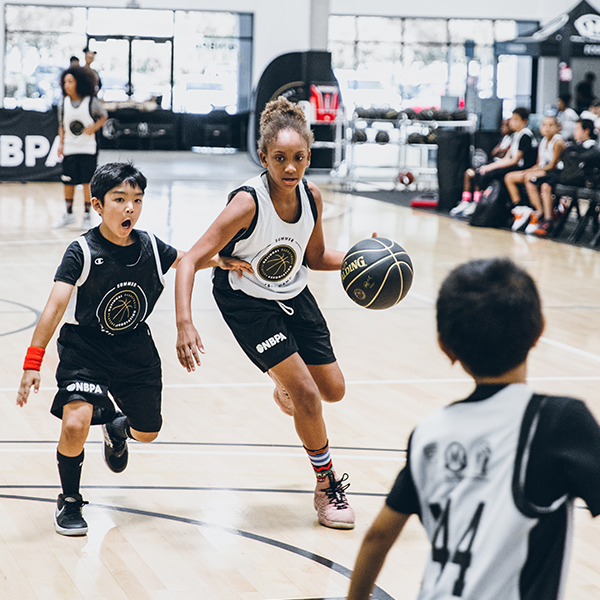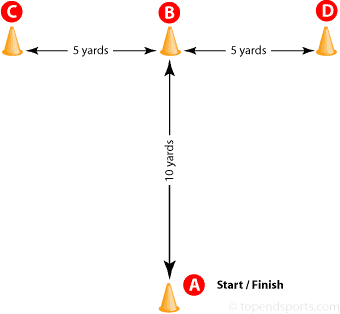
3 Fun & Effective Exercises For Basketball Youth
Regular physical activity can have many health benefits for children. Frequent exercise will help develop strong muscles and bones and build confidence at a young age. One of the main barriers why kids may not want to exercise, or go to the gym, could simply be because they do not enjoy what they are doing. It is very hard for a child to understand the benefits of proper movement and strength training. The more engaged they are during their training program, the more likely they are to enjoy their gym session. Practicing a specific skill can provide a sense of accomplishment and increase motivation in youth who are training for a specific sport. Take basketball for example. If you can create an exercise program for a child and incorporate movements that mimic what they do on the court, they are more likely to enjoy and see the value in what they are doing. Below are three exercises for youth basketball athletes to keep them engaged and involved in their training programs.
T-Drill:
The T-Drill is a great exercise for most sports, especially for young basketball players. When speaking in terms of “sport specific movement,” this drill is exactly that when referring to basketball. It combines acceleration, deceleration, cutting, lateral shuffling, back pedaling and change of direction. This drill will not only improve an athlete’s speed and agility, but it will also help them develop better balance and coordination. Kids love to feel like their exercise is some sort of game or challenge, and you can do just that with the T-Drill. An easy way to accomplish this is to time how long it takes them to complete the drill. Tracking this number will keep them more engaged and increase their motivation to give maximal effort each time they complete the drill.
Set-Up:
You will need four cones to set up this drill. Choose an area large enough and with a surface that is flat and non-slip. The four cones will end up making a “T.” The first cone is placed at the base of the “T” (Cone A) with the second cone placed 10 yards in front of that cone in a straight line (Cone B). Two cones will then be placed on both the left and right of Cone B (Cones C & D), 5 yards apart from Cone B. See below for an example.

Instructions:
Start by standing at Cone A in a sprint start position, leading with whichever leg you are most comfortable with. Sprint towards Cone B, plant and lateral shuffle to the left to Cone C. Once you have reached Cone C, plant and lateral shuffle to the right until you reach Cone D. Plant and shuffle back to your left to Cone B. Upon reaching Cone B, stay low and back pedal until you have reached where you started. This completes the drill. Refer to the video below for a visual.
Dumbbell Squat Jump:
The squat jump replicates a movement seen during almost every play in basketball. Young basketball players will see the purpose of this exercise as it directly relates to their sport. This movement is a great learning experience on how to properly squat, jump, and land. In terms of preventing future injury, the sooner we can assess and correct improper movement patterns, the faster we can decrease the athlete’s chance of injury. Common mistakes seen during the squat jump are knees caving in, landing too hard or too far forward, and poor posture. Learning how to move properly, especially with sport specific movements, not only builds confidence but it also improves athletic performance. The squat jump also enhances the “stretch-shortening cycle.” In simpler terms, we can break down the squat into three stages. The (1) lowering phase, or the squat, the (2) jump, and the (3) time it takes to transition from the squat to the jump. The quicker an athlete can go from the squat into the jump, the more efficient and explosive the jump will be, utilizing the stretch shortening cycle properly.
Instructions:
Start with two dumbbells by your side with arms straight and feet shoulder width apart. Weight should not be added until correct form has been achieved for consecutive repetitions. While keeping an upright torso, descend into a squat while keeping your heels from losing contact with the floor. As soon as the desired squat depth has been reached, roughly 90 degrees, immediately jump as high as you can and keep the weights by you sides with your arms straight. Do not pause at the bottom of your squat. Land softly and with control and go right into another squat, immediately jumping as high as you can again. Repeat these steps for 6-8 repetitions. Refer to the video below for a visual.
Medicine Ball Jump + Pass:
This exercise combines two common movements used in basketball, jumping and a chest pass. As a youth basketball player, these are two important sport specific skills to develop. The medicine ball jump + pass focuses on power, coordination, and landing mechanics. Learning at a young age how to land softly and absorb force through the ground is crucial for injury prevention. Common mistakes seen with this exercise include landing too hard and with the knees caving in, not being able to control the landing, and not passing with enough power. Each pass should be as if you are trying to throw the medicine ball through the wall. The athlete will only gain as much out of this as they put into it. Adding a medicine ball to the chest pass will be noticeably transferable when using a much lighter basketball on the court.
Instructions:
Start by standing roughly ten feet away from a wall with a solid foundation. Place your feet shoulder width apart and place a medicine ball against your chest with your elbows in. Simultaneously jump forward and chest pass the medicine ball towards the wall. Try to generate as much power and give maximal effort in each pass. Focus on “sticking” your landing in an athletic, squat position, controlling your momentum from falling forward. Focus on form and the force of your pass before adding more weight. Reset, and repeat 6-8 repetitions.
When working with younger athletes, try to incorporate exercises that are interesting for them and focus on sport specific movements. This will keep them engaged in their workout and help them understand the importance in what they are doing. Strength training should be an enjoyable experience, so try to blend in exercises that they need and that they enjoy. Think of the old saying, “time flies when you’re having fun.” If you or someone you know can benefit from a sport specific training program reach out to us at Olympia Fitness & Performance at 401-467-6701!
Pat Sturdahl worked in an outpatient physical therapy setting for over seven years before joining Olympia Fitness. He enjoys working with clients to help improve their mobility, stability and strength. Pat has experience working with local high school teams where he previously ran “Speed Schools.” This training focused on sport specific movements and plyometric drills.

